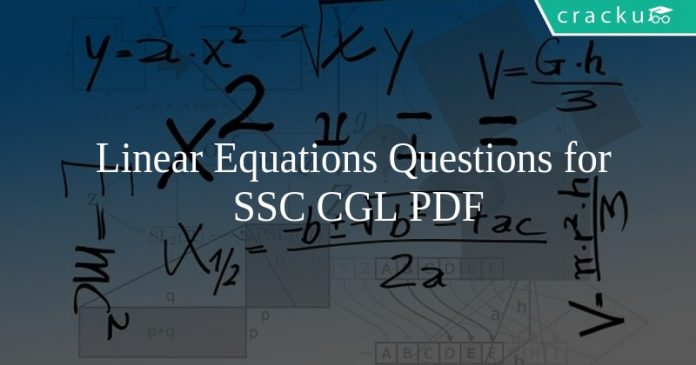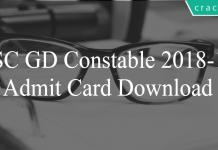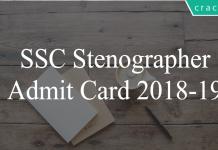Linear Equations Questions for SSC CGL PDF
Download SSC CGL Questions on Linear Equations PDF based on previous papers very useful for SSC CGL Exams. Top-15 Very Important Linear Equations Questions for SSC CGL Exam.
Get 200 SSC mocks for just Rs. 249. Enroll here
Download Linear Equations Questions for SSC CGL PDF
Question 1: If $\frac{\sqrt{a+2b}+\sqrt{a-2b}}{\sqrt{a+2b} – \sqrt{a-2b}}=\frac{\sqrt{3}}{1}$, find the value of $\frac{a}{b}$
a) $2:\sqrt{3}$
b) $\sqrt{3}:4$
c) $\sqrt{3}:2$
d) $4:\sqrt{3}$
Question 2: A point in the 4th quadrant is 6 unit away from x-axis and 7 unit away from y-axis. The point is at
a) (7, -6)
b) (-7, 6)
c) (-6, -7)
d) (-6, 7)
Question 3: The sum of four numbers is 48. When 5 and 1 are added to the first two; and 3 and 7 are subtracted from the 3rd and 4th, all the four numbers will be equal. The numbers are
a) 9, 7, 15, 17
b) 4, 12, 12, 20
c) 5, 11, 13, 19
d) 6, 10, 14, 18
Question 4: The length of the portion of the straight line 3x + 4y = 12 intercepted between the axes is
a) 5
b) 3
c) 4
d) 7
Question 5: If x = 332, y = 332, z = 332, then the value of $x^3 + y^3 + z^3 – 3xyz$ is
a) 10000
b) 0
c) 8000
d) 9000
Take a free mock test for SSC CGL
Download SSC CGL Previous Papers PDF
18000+ Questions – Free SSC Study Material
Question 6: 2x- ky + 7 = 0 and 6x- 12y+ 15 = 0 has no solution for
a) k=- 1
b) k=- 4
c) k = 4
d) k = 1
Question 7: A number exceeds its two fifth by 75. The number is
a) 125
b) 112
c) 100
d) 150
More SSC CGL Important Questions and Answers PDF
Question 8: Given that $x^{3} + y^{3} = 72$ and $xy = 8$ with $x > y$. Then the value of $(x – y)$ is
a) 4
b) -4
c) 2
d) -2
Question 9: If the sum of two numbers, one of which is $\frac{2}{5}$ times the other, is 50, then the numbers are
a) $\frac{115}{7}$ and $\frac{235}{7}$
b) $\frac{150}{7}$ and $\frac{200}{7}$
c) $\frac{240}{7}$ and $\frac{110}{7}$
d) $\frac{250}{7}$ and $\frac{100}{7}$
Question 10: If $\frac{3}{4}$ of a number is 7 more then $\frac{1}{6}$ of the number, then $\frac{5}{3}$ of the number is
a) 12
b) 20
c) 15
d) 18
Question 11: The area of the triangle formed by the graphs of the equations x= 0, 2x+ 3y= 6 and x+ y= 3 is :
a) 3 sq. unit
b) $4\frac{1}{2}$ sq. unit
c) $1\frac{1}{2}$ sq. unit
d) 1 sq. unit
Question 12: The graphs of x = a and y = b intersect at
a) (a, b)
b) (b, a)
c) (-a, b)
d) (a, -b)
Question 13: The area in sq. unit. of the triangle formed by the graphs ofx= 4, y= 3 and 3x+ 4y= 12 is
a) 12
b) 8
c) 10
d) 6
Question 14: The equations 3x+ 4y = 10 -x+ 2y = 0 have the solution (a, b). The value of a + b is
a) 1
b) 2
c) 3
d) 4
Question 15: If $2x+3y=\frac{5}{6} and $xy=\frac{5}{6}$ then the value of $8x^{3}+27y^{3}$ is
a) $583$
b) $\frac{583}{4}$
c) $187$
d) $\frac{671}{8}$
SSC CGL Previous Papers Download PDF
Answers & Solutions:
1) Answer (D)
here in this question $\frac{\sqrt{a+2b}+\sqrt{a-2b}}{\sqrt{a+2b-}\sqrt{a-2b}}=\frac{\sqrt{3}}{1}$
using componendo and dividendo, we will get
$\frac{\sqrt(a+2b)}{\sqrt(a-2b)} = \frac{\sqrt3 + 1 }{\sqrt3 – 1}$
now on squaring both side and solving, we will get
16 b = 4a$\surd3$
$\frac{a}{b}$ = $\frac{4}{\surd3}$
2) Answer (A)
A point in the 4th quadrant will be in the form of $(x,-y)$
Since, the point is 6 units away from x axis, => y coordinate = 6
and the point is 7 units away from y axis, => x coordinate = 7
=> Point = (7,-6)
3) Answer (D)
Let the numbers be $a,b,c,d$
=> $a+b+c+d$ = 48 ——–Eqn(1)
When 5 & 1 are added to first two, => $(a+5) and (b+1)$
and when 3 & 7 are subtracted from last two, => $(c-3) and (d-7)$
According to question :
=> $a+5 = b+1 = c-3 = d-7 = k$ (let)
Now, in eqn(1)
$(a+5) + (b+1) + (c-3) + (d-7)$ = 48 + (5+1-3-7)
=> $k+k+k+k$ = 48-4
=> $k$ = 11
=> Numbers are : $a = k-5 = 11-5 = 6$
Similarly, $b$ = 10
$c$ = 14
$d$ = 18
4) Answer (A)
Equation : $3x + 4y = 12$
To find $x$-intercept, put $y$=0
=> $3x + 0 = 12$
=> $x$ = 4
Similarly to find $y$-intercept, we need to put $x$ = 0
=> $0 + 4y = 12$
=> $y$ = 3
Thus, the line passes through (4,0) in x-axis and (0,3) in y-axis
Using, $d = \sqrt{(x_2-x_1)^2+(y_2-y_1)^2}$
=> $x_1 = 0 , x_2 = 4 , y_1 = 0 , y_2 = 3$
=> $d = \sqrt{4^2 + 3^2}$
=> $d = \sqrt{25} = 5$
5) Answer (B)
when x = y = z= 332 , then $(x^2 + y^2 + z^2 – xy – yz – xz)$ = 0
and hence $x^3 + y^3 + z^3 – 3xyz$ = 0 as $x^3 + y^3 + z^3 – 3xyz$ = (x+y+z) $(x^2 + y^2 + z^2 – xy – yz – xz)$
and hence the answer for this question is = 0
6) Answer (C)
NOTE : – For the pair of equations : $a_1x + b_1y + c_1 = 0$ and $a_2x + b_2y + c_2 = 0$
The equations have no solution only if : $\frac{a_1}{a_2} = \frac{b_1}{b_2} \neq \frac{c_1}{c_2}$
Equations : $2x- ky + 7 = 0$ and $6x- 12y+ 15 = 0$
Comparing with above formula, we get :
=> $\frac{2}{6} = \frac{-k}{-12}$
=> $\frac{k}{12} = \frac{1}{3}$
=> $k = 4$
7) Answer (A)
Let the number be $x$
Acc to ques :
=> $x – \frac{2}{5}x = 75$
=> $\frac{3x}{5} = 75$
=> $x = 125$
8) Answer (C)
Given : $x^{3} + y^{3} = 72$ and $xy = 8$
Solution : $(x+y)^3 = x^3 + y^3 + 3xy(x+y)$
=> $(x+y)^3 = 72 + 3.8(x+y)$
=> $(x+y)^3 – 24(x+y) – 72 = 0$
This is a cubic equation in terms of $(x+y)$ which has one real root = 6
=> $x+y = 6$
Now, $(x-y)^2 = (x+y)^2 – 4xy$
=> $(x-y) = \sqrt{6^2 – 4*8} = \sqrt{4}$
=> $(x-y) = 2$
9) Answer (D)
Let the number be $x$
=> Other number will be $\frac{2x}{5}$
Acc to ques :
=> $x$ + $\frac{2x}{5}$ = 50
=> $7x$ = 250
=> $x$ = $\frac{250}{7}$
and second number = $\frac{2}{5} * \frac{250}{7} = \frac{100}{7}$
10) Answer (B)
Let the number be $x$
Acc to ques :
=> $\frac{3x}{4} = \frac{x}{6} + 7$
=> $\frac{14x}{24} = 7$
=> $x = 12$
=> $\frac{5}{3}$ of the number = $\frac{5}{3}$ * 12 = 20
11) Answer (C)
AC represents $x+y=3$
BC represents $2x+3y=6$
AB represents $x=0$
=> ABC is the required triangle.
Base AB = 1 unit and height OC = 3 units
=> Area of $\triangle$ABC = $\frac{1}{2}$ * AB * OC
= $\frac{1}{2}$ * 1 * 3 = 1$\frac{1}{2}$ sq. unit
12) Answer (A)
Clearly, the lines x = a and y = b meets at a point (a,b)
13) Answer (D)
Clearly, x=4 is a vertical line passing through (4,0) and y=3 is a horizontal line passing through the point (0,3)
The line 3x+ 4y= 12 also passes through (4,0) and (0,3) .
Hence, it is a right angled triangle with base=4 units and height=3 units.
The area of the triangle is = $\frac{1}{2}bh$
= $\frac{1}{2}\times4\times3$
=6 units
14) Answer (A)
3x + 4y = 0 —> (1)
x – 2y = 10
$(x – 2y = 10)\times2$
2x – 4y = 20 —> (2)
5x = 20
x = 4
y = -3
x + y = 1
15) Answer (D)
$2x+3y=\frac{11}{2}$
cubing on both sides
$(2x+3y)^{3}=(\frac{11}{2})^{3}$
$8x^{3}+27y^{3}+3(2x)(8y)(2x+3y)=\frac{1331}{8}$
$8x^{3}+27y^{3}+3(16xy)(2x+3y)=\frac{1331}{8}$
$8x^{3}+27y^{3}+3(16(\frac{5}{6})(\frac{5}{6})=\frac{1331}{8}$
Get 200 SSC mocks for just Rs. 249. Enroll here
We hope this Linear Equations Questions for SSC CGL Exams will be highly useful for your preparation.







